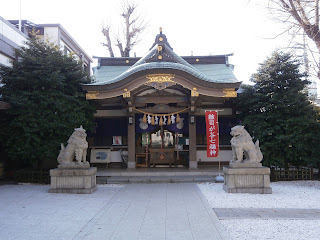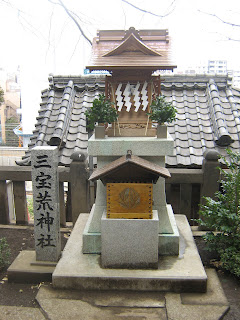I was recommended the work of Mircea Eliade (1907-1986) by my adviser. The writings of Eliade, who was an historian of religion of Romanian descent, turned out to be very valuable indeed. The level on which Eliade approaches religion is interesting in the sense that it allows him to reveal certain universal urges and tendency that seem to be written in the DNA of the Homo sapiens. He goes beyond the study of one particular religion and pays attention to the basic characteristics of religion. By doing so one is forced to reconsider the meaning of the term “religion”.
He,
for example, considers housewarming parties to be the modern version of ancient
rituals to consecrate a new dwelling1. Mankind seems to yearn for a place he
can put in the centre of his universe, a place that is sacred and therefore demands
the proper rites, in modern terms “a place to call home”. As mankind cannot
cope with the utter chaos of the nature surrounding him, he creates a place where
there is order, just like the gods of many a religion created the earth (or a
particular country) out of the chaos. Eliade thinks of the consecration of a
new dwelling as a repetition of the world’s creation by the gods.
While
reading the aforementioned, I immediately had to think of altars. Buddhist
altars often have a setting which consists of two parts which are identical to
one another. In the middle one finds the deity’s/Buddha’s statue and the
incense burner. To both sides there are the candles (closest to the statue) and
the vases containing flowers. On Shintoist altars a similar order can be found:
food offerings in the middle and to both sides candles and sakaki 榊 branches. This inclination to
create a sacred space by means of order, or more specifically symmetry, is by
no means exclusively East-Asian.
Other
interesting themes and concepts often found in religions according to Eliade
(and illustrated with my own examples between brackets):
- Holy pillars
(e.g. the pillar around which Izanami伊邪那美and Izanagi伊邪那岐walked before having intercourse, the Jupiter Columns of Roman Germania,
etc.)
- Mountains as
Heaven or a way to Heaven (e.g. Sumeru [Skt: सुमेरु] in Buddhism, mountains in Taoism and shugendō 修験道, mount Olympus [Ὄλυμπος] in ancient Greece etc.)
-
Connection with Heaven or the gods through the chimney (offers by the hearth in
ancient Rome, Saint Nicholas in Europe and North America etc.)
- The
usage of animals to decide upon a place to found a city (the eagle capturing a
snake on a cactus as a sign for the Aztecs [Mexico City], the construction of a
church on the spot where one bear killed another in an organised fight [the Belgian
village of Berlaar] etc.)
- The
killing of a dragon or monster to save people (Susanoo no Mikoto 須佐之男命 killing Ya-mata no Orochi 八岐大蛇, Hercules
killing the Lernaean Hydra, Thor killing Jörmungandr, Saint George killing the
dragon etc.)
- The
cleansing of one’s home/city or even oneself at the beginning of the New year/spring
(Ōsōji 大掃除in Japan,
cleansing with februa in ancient
Rome, Lent in Christianity etc.)
- The decline
in actual worship of the highest deities in favour of more accessible deities
(Amaterasu-ōmikami 天照大御神, Inari 稲荷 and so forth, rather than Izanagi/Izanami and their
ancestors; Jesus, the Virgin Mary and other Saints, rather than God; specific
Buddha’s and bodhisattva’s rather than the historical Buddha. )
Footnotes:
1 This
reminded me of a story I heard from a native when I visited Chiapas (in the
South of Mexico) in 2010. In a village near San Cristóbal (Chamula if I am not
mistaken), people who are about to build a new home sacrifice a chicken in church.
The church itself shows highly syncretic elements (Roman Catholic elements along
with elements from pre-Christian Tzotzil Maya beliefs). After the meat has been
consumed the leftovers are buried on the spot where the house is to be built.
Sources:
- Eliade, Mircea (translated from French original by Willard R. Trask), The Sacred and the Profane: The Nature of Religion. New York: Harper Torchbooks, 1961.
- Eliade, Micea. (translated to Dutch by D. Mok, N. van Maaren, A. Scheepers). Het heilige en het profane: een onderzoek naar het wezen van religie. Amsterdam: Uitgeverij Abraxas, 2006.





























